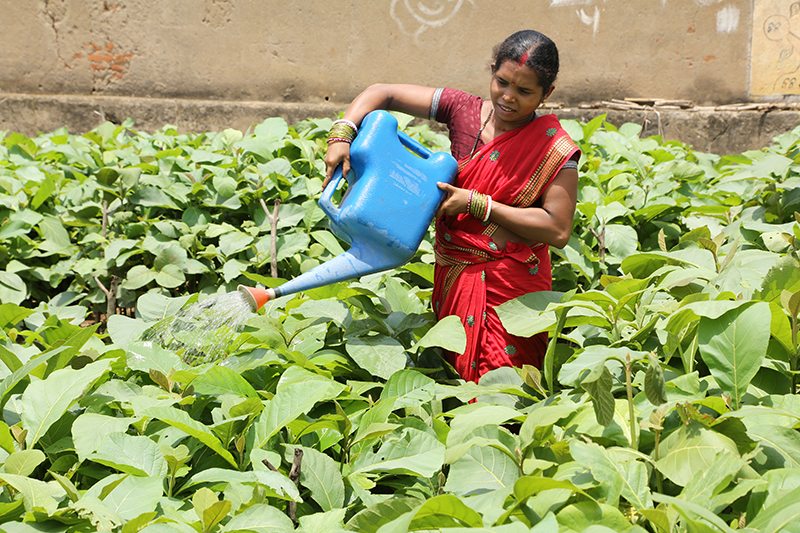
This article was originally published by News Deeply.
By Melany Grout
A majority of the world’s poorest share three traits: They rely on agriculture to survive, they don’t have secure rights to the land they till and they are women. These traits form a poverty trap that is no accident of nature.
Policies and practices in more than half of all countries around the world hinder women’s ownership, control or access to land, undermining their rights to the most important asset in their lives. This is despite the fact that more than 400 million women farm.
Insecure rights to the land they rely on for food, income and shelter casts a long shadow over women’s lives, over their communities and over our world’s ability to reach its development goals.
Consider a woman smallholder farmer. Without secure rights to the land she depends on, her incentive to invest in her land in ways that boost her harvest and improve her life is inhibited. Indeed, should she invest in her land – for example, by laboring to terrace it or using better-quality and more expensive fertilizer – she runs the risk of incentivizing others to take it and leave her landless with no recourse to get it back.
To reduce poverty, improve sustainability, resiliency and nutrition and achieve a whole host of development goals, we absolutely must start by strengthening women’s rights to land.
Recent developments are promising, and there is growing recognition around the world of the fundamental importance of women’s land rights.
The United Nations 2030 development agenda recognizes the significance of women’s land rights, with land rights featuring prominently in the sustainable development goals related to poverty, food security and gender equality.
At the Women Deliver 2016 conference in May, 25 issue experts from around the world drafted a policy brief that argues for securing land and inheritance rights for women as one solution to improving the lives of women. The brief addresses what happens when girls and women endure restrictions on these rights and how such limitations can affect their health, education, housing and livelihood.
Countries around the world are stepping forward, too.
India has just released a draft National Policy for Women 2016 that recognizes women as farmers. Currently, women are not legally recognized as farmers although 79 percent of rural women work in agriculture. The draft policy stresses the significance of addressing women’s rights to land and other productive resources, and the importance of these rights in the global fights against development challenges such as HIV, hunger and domestic violence.
Recognizing women as farmers is a significant step, and could prompt government officials and programs to support women farmers in their livelihoods, make women farmers more visible in policy dialogue, and help ensure greater resources are funneled toward securing women’s rights over resources and access to entitlements for agricultural services.
In 2010, Kenya adopted a constitution that provided women with stronger land rights. In January 2016, Myanmar adopted a National Land Use Policy that explicitly calls out women and men’s equal rights to land allocation, management and governance.
Countries are not only recognizing the importance of ensuring that women’s rights to land are equal in law, but are developing innovative interventions to ensure the full implementation of these rights.
In India, state governments are prioritizing women in land allocation programs. In Uganda and Tanzania, grassroots legal aid is promoting men’s and women’s awareness of their rights.
These legal changes and creative interventions that recognize and strengthen women’s land rights should be supported and expanded. Women, their families and the world benefit when women have legal rights to the land they farm.
